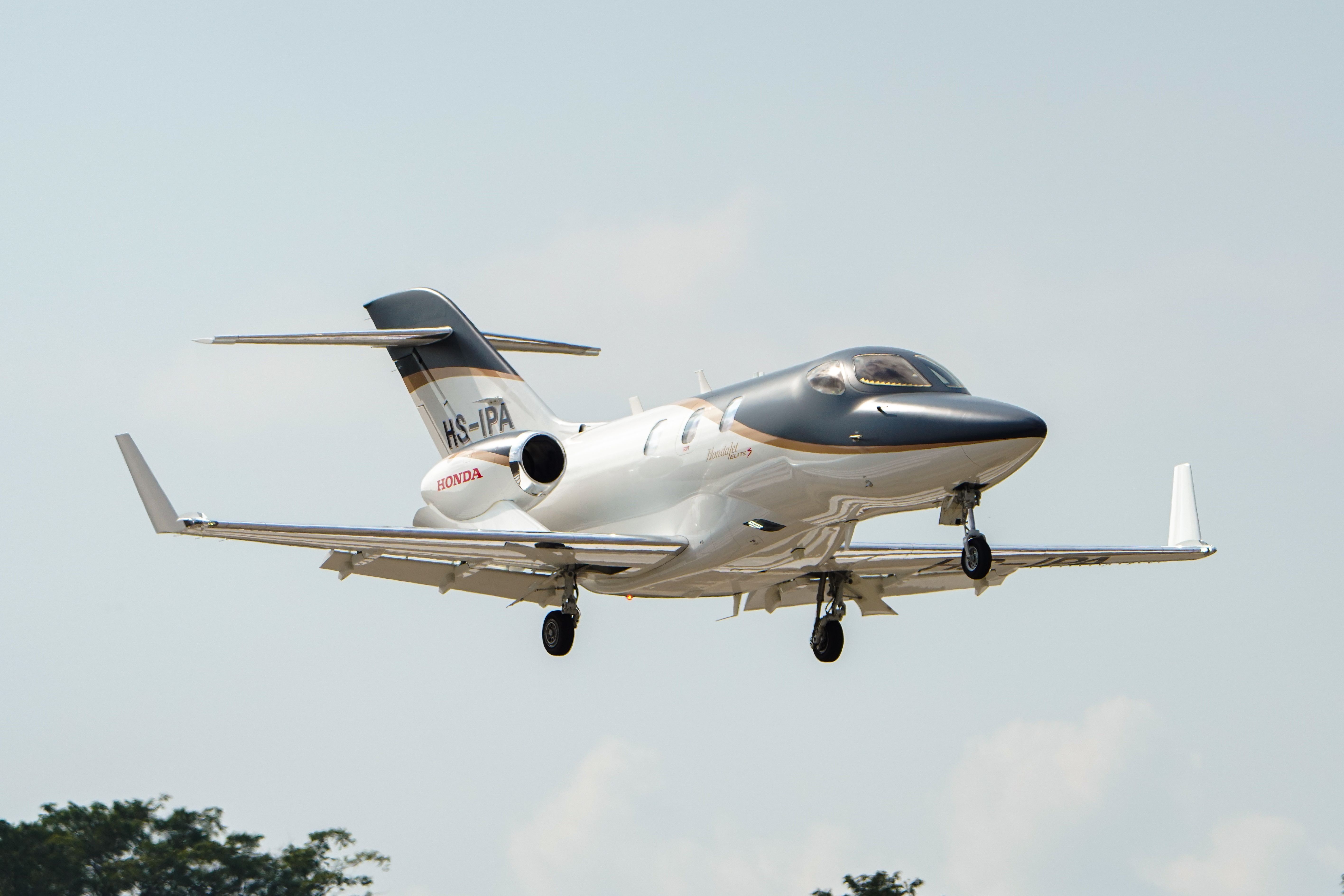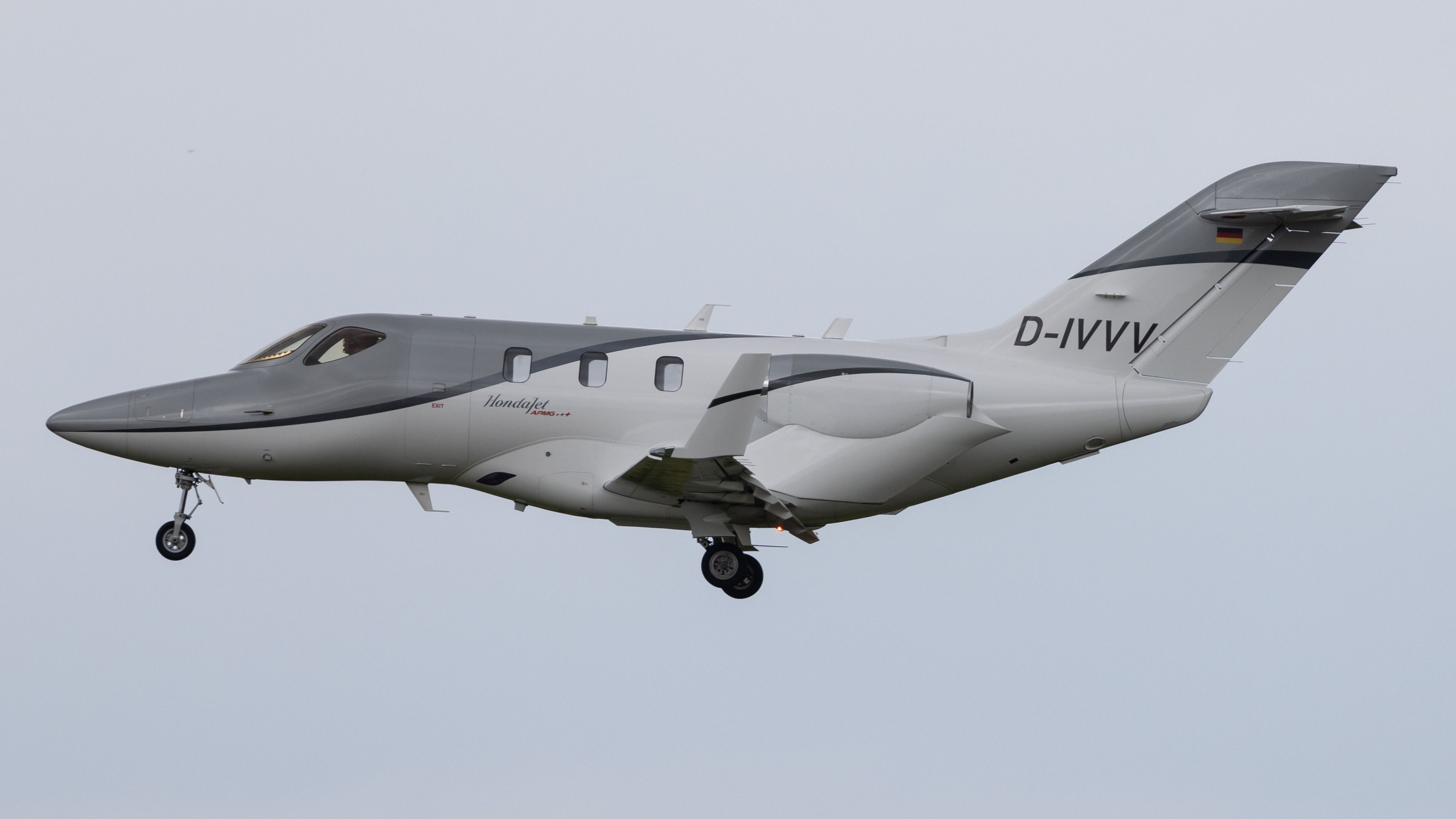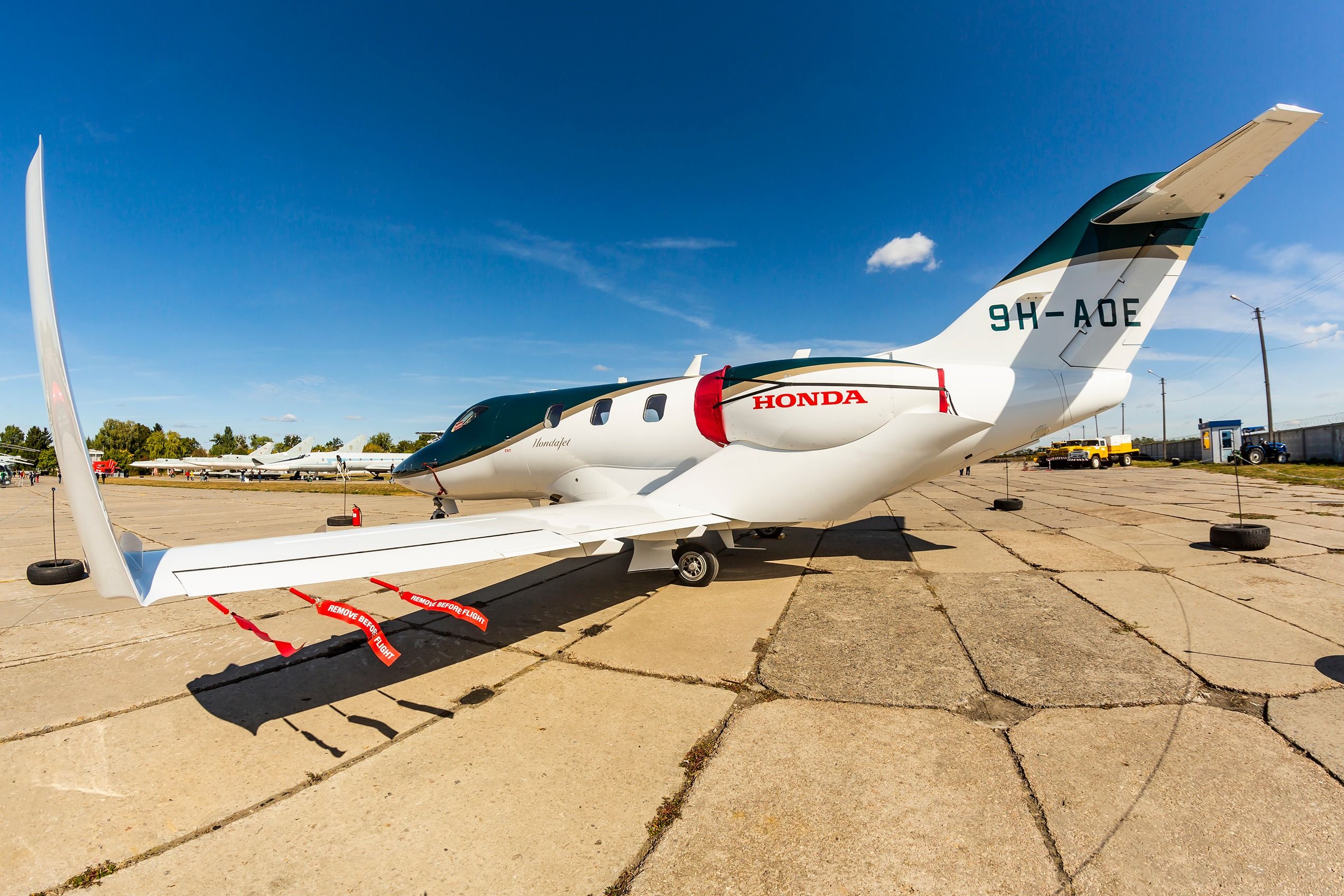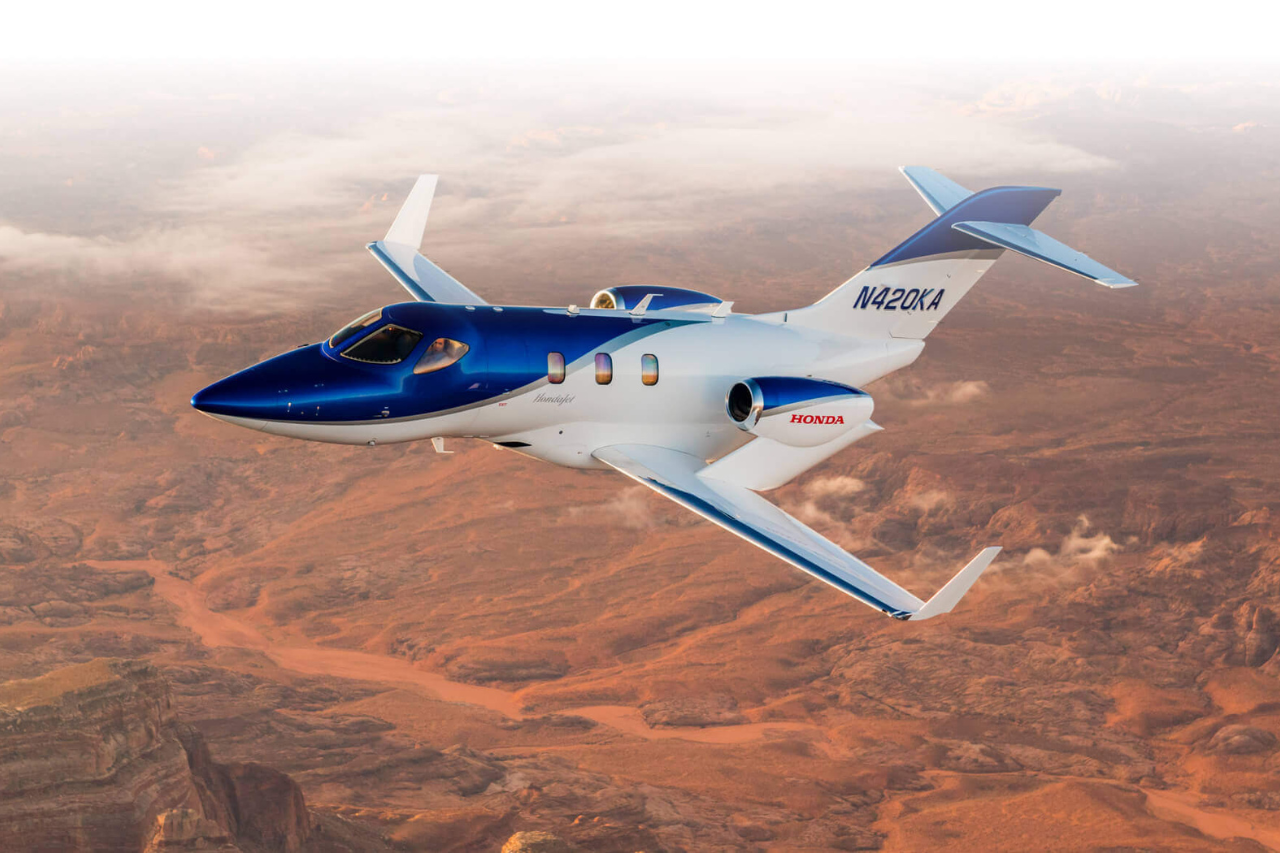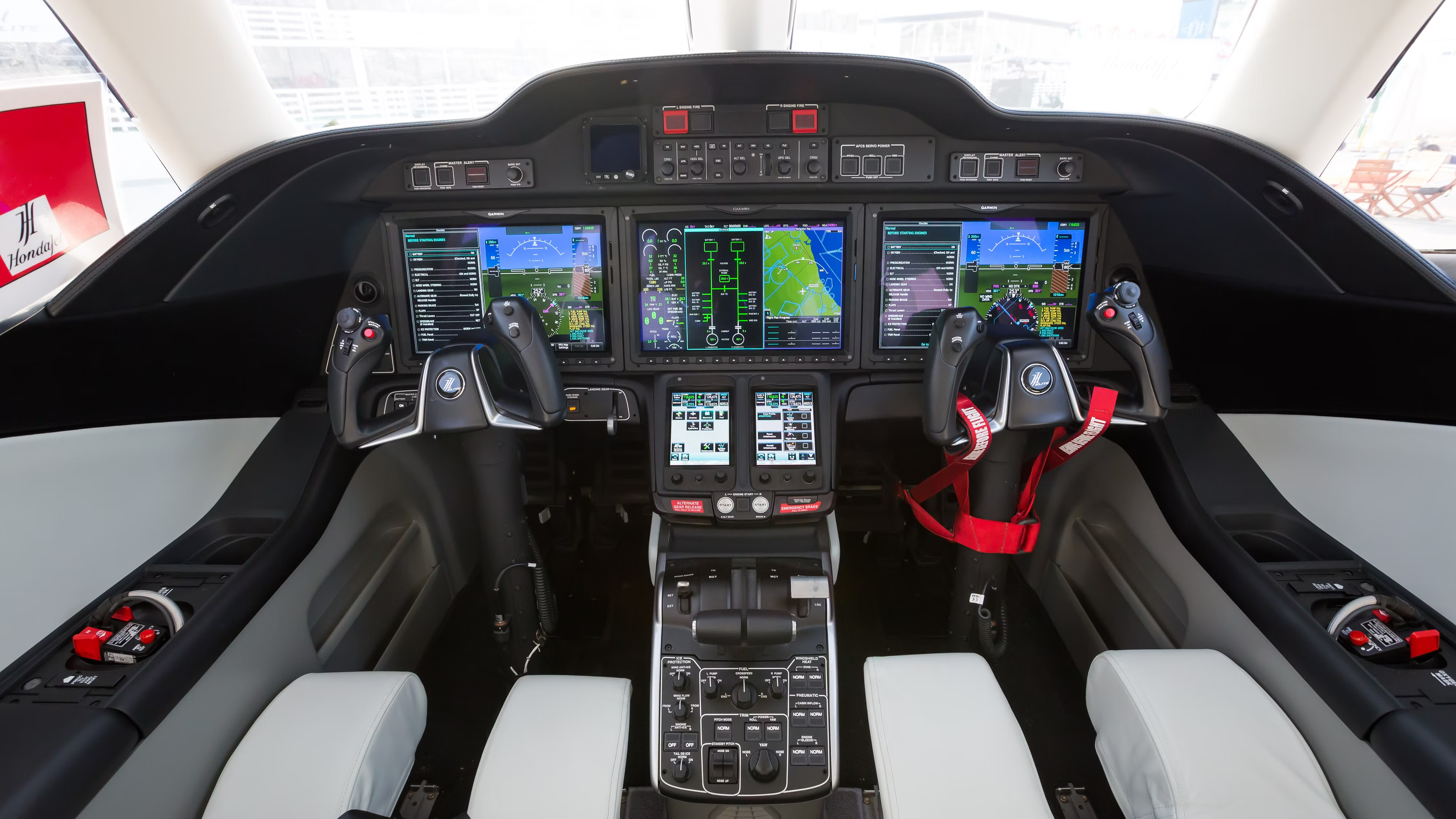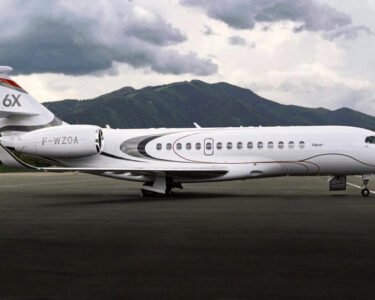Summary
- Over-the-wing engines on the HondaJet HA-420 free up space, reduce noise, and improve aerodynamics.
- GE Honda HF120 engines, born from a joint venture, provide increased fuel efficiency & performance for the type.
- The HondaJet HA-420’s cockpit features an advanced Garmin G3000 system, automated functions, and emergency autoland.
TheHonda HA-420 HondaJetis the face of Honda Aircraft Company. Early concepts of the type began as early as 1997, although Honda began studying light business jets as far back as the late 1980s. It created a light business jet, which was called the Honda MH02, and utilized the Mississippi State University Raspet Flight Research Facility to begin testing its qualifications in flight.
The lead designer of the future aircraft, Michimasa Fujino, began designing the HondaJet as early as 1997. The company began flight testing the aircraft as early as 2003. However, the company did not decide to commercialize the plane for several years.
Photo: Bluebearwing | Shutterstock
This all changed in 2005 when Fujino displayed his aircraft at the annual EAA AirVenture airshow in Oshkosh, Wisconsin. The event garnished a strong interest in the business jet. Eventually, Fujino convinced Honda executives to commercialize the light aircraft. This announcement came at the same event the following year. After ten years of testing and a lengthy certification process, the HondaJet HA-420 began deliveries. Since then, over 250 HondaJets and its variants have been delivered to customers across the world. Let’s take a closer look atsome of the reasons that make this light business jet so effectiveand so popular in the private aviation market.
4 Over-the-wing engine mounts
The engine pylons attach directly to the wing instead of the fuselage.
This design feature is perhaps the most notable difference between the HA-420 HondaJet and its competitors. There are several benefits from this engine placement. The fuselage no longer requires an engine support structure in the interior of the aircraft. A standard engine configuration requires a large beam to attach the engines to the fuselage safely. The HondaJet’s engine placement on the wings removes this need from within the fuselage and frees up a large amount of interior space for the passengers to utilize, either in baggage space or seating area.
Photo: Kevin Hackert | Shutterstock
Another benefit of the engine placement is that it reduces noise and vibration. A standard configuration positions extremely loud engines directly on the outside of the cabin near the travelers’ heads. This increases noise and even vibration within the cabin. Placing the engines on the wing removes them from the cabin and puts them a safe distance away. This reduces the overall vibration and ensures the cabin is as quiet as possible.
Extensive research was conducted on this design feature to determine its optimal placement on the wing. Honda Aircraft Company found that the placement of the engines on the wing also improved the aerodynamics in certain areas. An optimal placement reduces the amount of shockwaves that flow over the wing; this contributes to greater fuel efficiency and allows the aircraft to reach higher speeds by minimizing the drag around the engine.
3 Collaborated engines
The turbofan engines were designed in collaboration with GE Aviation and Honda.
The engines utilized on the HondaJet HA-420 are called GE Honda HF120 turbofan engines. The engines themselves began being developed in the late 1990s by Honda when it created its own small turbofan engine, which was called the HF118. However, GE and Honda initiated a joint venture in 2004 based in Cincinnati, Ohio, where GE Aerospace can be found. This led to the development of the much improved GE Honda HF120, which was eventually used on the HA-420 HondaJet.
Photo: Oleksandr Naumenko | Shutterstock
These engines each produce approximately 2,050 pounds of thrust to power the aircraft. This allows theaircraft to reach the following specifications:
- Cruise speed: 422 knots (486 miles per hour)
- Cruise altitude: 43,000 feet
- Rate of climb: 4,100 feet per minute
- Takeoff distance: 3,699 feet
- Landing distance: 2,717 feet
2 Higher fuel efficiency
Honda Aircraft Company claims it can achieve up to 20% better fuel efficiency than other light business jets.
Several different improvements to the HondaJet HA-420 allow the aircraft to have some of thebest fuel efficiency in its class. One of these reasons was the improved GE Honda HF120 turbofan engines, as previously mentioned. The joint venture between the two companies helped make significant improvements, such as the utilization of 3D aerodynamic design to make components. Its placement on the wing also helped keep the engine cooler and more efficient.
Photo: Honda Aircraft Company
Honda lists its fuel burn specifications as follows:
- Fuel burn at high-speed cruise: 999 pounds per hour (when flying at 419 knots)
- Fuel burn at long-range cruise: 543 pounds per hour (when flying at 360 knots)
These numbers vary depending on the altitude as well. These numbers are better than or comparable to many of its competitors, including the Cessna Citation M2, Cessna Citation CJ3, Embraer Phenom 100, and Eclipse 550.
1 Unique cockpit
The cockpit was designed to improve pilots’ situational awareness.
The HondaJet HA-420 comes equipped with the Garmin G3000 glass cockpit system, which utilizes three large touchscreen displays; much of the aircraft’scockpit was designed to be automated. The light business jet utilizes an autothrottle system to help manage the pilot’s workload throughout all phases of the flight. It also includes emergency autoland, a newer feature developed by Garmin. This system can land the aircraft without human intervention in the event of an emergency.
Photo: M101Studio | Shutterstock
Other updated features also help with the pilot’s workload throughout the flight. This includes an automated anti-ice, lighting, and pressurization system for pilot or traveler convenience. The HA-420 HondaJet also has automated ground spoilers, a stabilized approach system, and an advanced steering and augmentation system.


